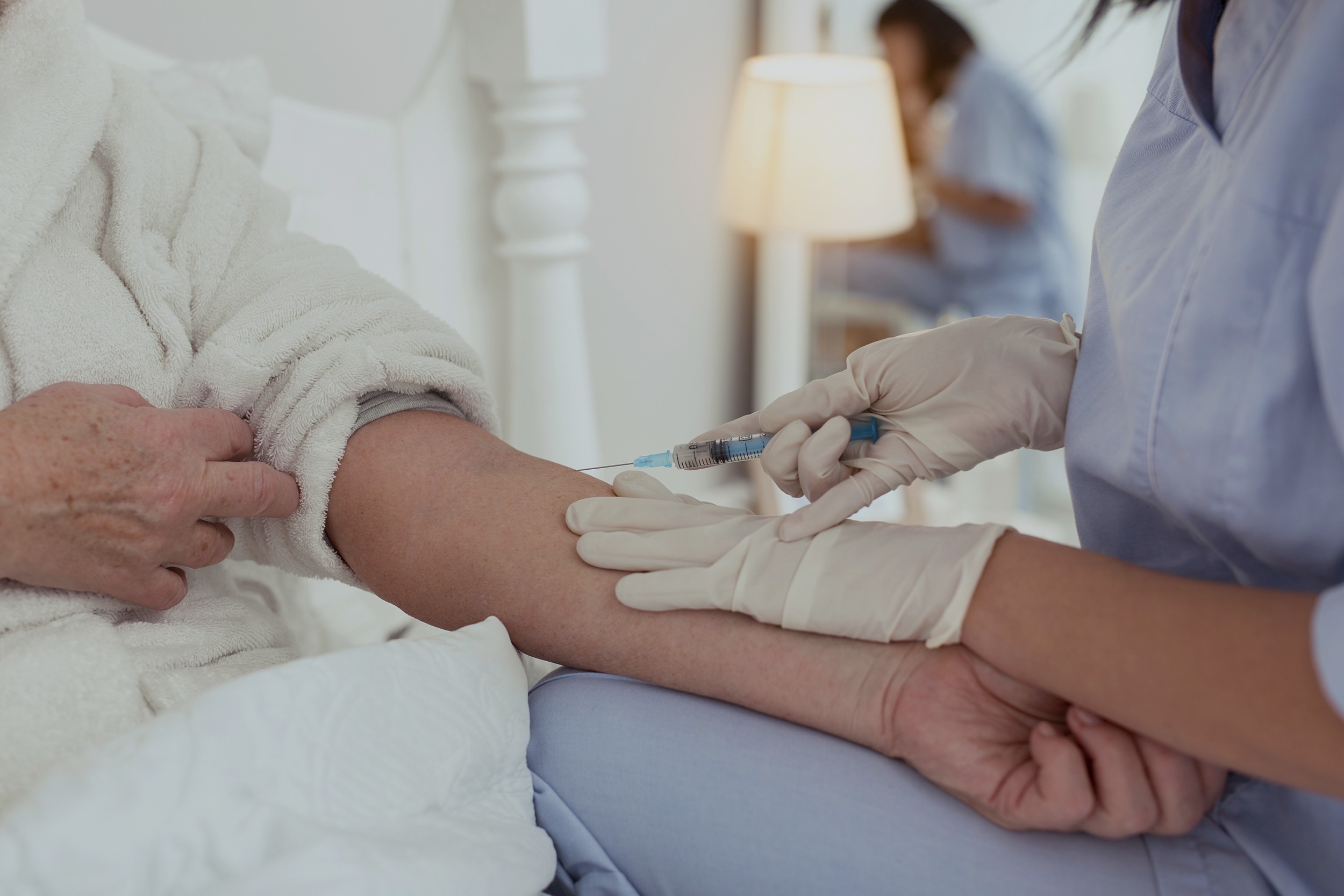In a situation where population ageing is facing hospital facilities that are under-housed, it is vital for our health system to see the development of new hospital alternatives.
In recent years, Homecare & Hospital-at-home Care (Editor’s note: HAD & MAD in french) activities have been booming. These new forms of care are encouraged by public authorities concerned with reducing costs and by patients who prefer to be treated at home when the situation permits.
How is the management of patients outside the traditional hospital setting coordinated? What role does the transporter play in the circuit of medicines and health materials, and what are the distribution practices to be respected? Coordination, health expertise and traceability are the leitmotivs of this tailored health logistics.
1. A favourable context for “off-site” hospitalizations
Since 2005, health authorities have been taking action to reduce the length of hospital stays and to encourage home stay. In this sense, Homecare activities are often preferred, especially for people with a slight loss of autonomy.
This development is motivated by 3 major factors:
– The massive ageing of the population: today, 1 in 4 French people are over 60 years old. By 2040, seniors could represent 1/3 of the population. Inevitable consequence: an increase in chronic diseases and functional dependence;
– Major progress in medicine: the new medical devices adapted to the outpatient system make it possible to manage increasingly heavy pathologies outside hospitals;
– The necessary cost reduction of the French health system: in 2019, an estimated €23.8 billion was spent on dependency in France. Setting up an Hospital-at-home Care saves an average of €300 per day per person.
2. Homecare: an ultra-coordinated logistics circuit
In the context of in-house/home care, the logistical aspects are decisive. Organized around the patient’s therapeutic project, the logistics must be able to meet both the time requirements, the traceability requirements and the different regulations.
In homecare, the material resources are delivered at the beginning of the treatment of the patient by a provider contracted with the hospital. The latter’s mission is to deliver and install in the patient’s home all the medical equipment necessary for the realization of diagnostics and care (medical bed, wheelchair…), as well as the supplies of medical benefits (oxygen therapy, infusions, nutrition bag …). The provider must also train the patient and his entourage in their proper use to be as autonomous as possible.
The Tospital-at-home Care activities are more complex, in particular by the evolutionary character of the patient’s state of health and the multiplicity of actors involved in the circuit of the drug. Bringing together a health care team, a coordination service and various health care providers, they require a rigorous organization. Generally, the medical device must be delivered before the arrival of the health care team. In the event of an emergency, the facility shall make available to the patient an alert protocol.
3. Pharmaceutical logistics: a high-surveillance route
Unlike services in Homecare that are not regulated by any regulation, the specificities in Hospital-at-home Care are numerous. Authorized since the decree of July 25, 1995 [1], the home delivery of medicines remains highly regulated and requires the obtaining of approvals from various bodies (DDASS, CRAM, CPAM…).

Thus, to be in good standing, deliveries in Hospital-at-home Caremust be checked upstream by a licensed pharmacist. After consulting the coordinating physician, the pharmacist organizes for each patient the circuit of medicines with the pharmacy for internal use of the hospital.
The doctor may also call upon an dispensing pharmacy. In this case, a standard agreement [2] specifies the obligations incumbent on the pharmacist, the pharmacist of the PUI and the Hospital-at-home Care establishment to guarantee the integrity of the product being transported.Depending on the thermo-sensitivity of the product, the pharmacist will recommend the temperature at which the product must be transported and will give a nominative and adapted packaging so that its integrity is guaranteed the time of its delivery.
4. ATS SANTÉ, the promise of tailor-made logistics
Pharmaceutical distribution in Homecare and Hospital-at-home Care requires flexibility, reliability and traceability. Entirely focused on time and temperature control, ATS SANTÉ adapts to the patient care journey and is positioned on 3 ad-hoc services:
- Scheduled transportation or regular shuttles: daily collection of medication at the hospital’s PUI (Editor’s note: Pharmacy for internal use) to be delivered either directly to the patient or to the Hospital-at-home Care Branch for recovery by caregivers prior to care delivery.
- Unplanned or urgent transportation: a delay in treatment preparation or a last-minute change (i.e. for chemotherapy) may require delivery outside of scheduled schedules. In these cases, emergency delivery is made on the same day, either to the Hospital-at-home Care coil or directly to the patient.
- Being the hospital’s relay: in the evening and on weekends to deliver to the patient’s home the equipment necessary for the administration of care (delivery or replacement of nutrition pumps for example)
The rise of Hospital-at-home Care & Homecare activities has led to the emergence of many companies specializing in medical transport. With an available 24/7, traceability via bar code to the patient’s home, and a global offer integrating the 1st level of equipment installation, ATS Santé has been able to adapt to the challenges and constraints of hospital logistics, and establish itself as a leading player in the logistics of sensitive products.
SOURCES
[1] Article L. 5126-5-1 du CSP
[2] A contract for the proper use of medicinal products has been signed with the Regional Hospital Agency (ARH) covering the scope of pharmaceutical specialities, products and services. These contracts are applicable to healthcare establishments subject to T2A (Activity-based pricing), and therefore to HAD since 2006.
[3] The administration of medicines in home hospital | High Authority of Health (Haute autorité de Santé, in french)







